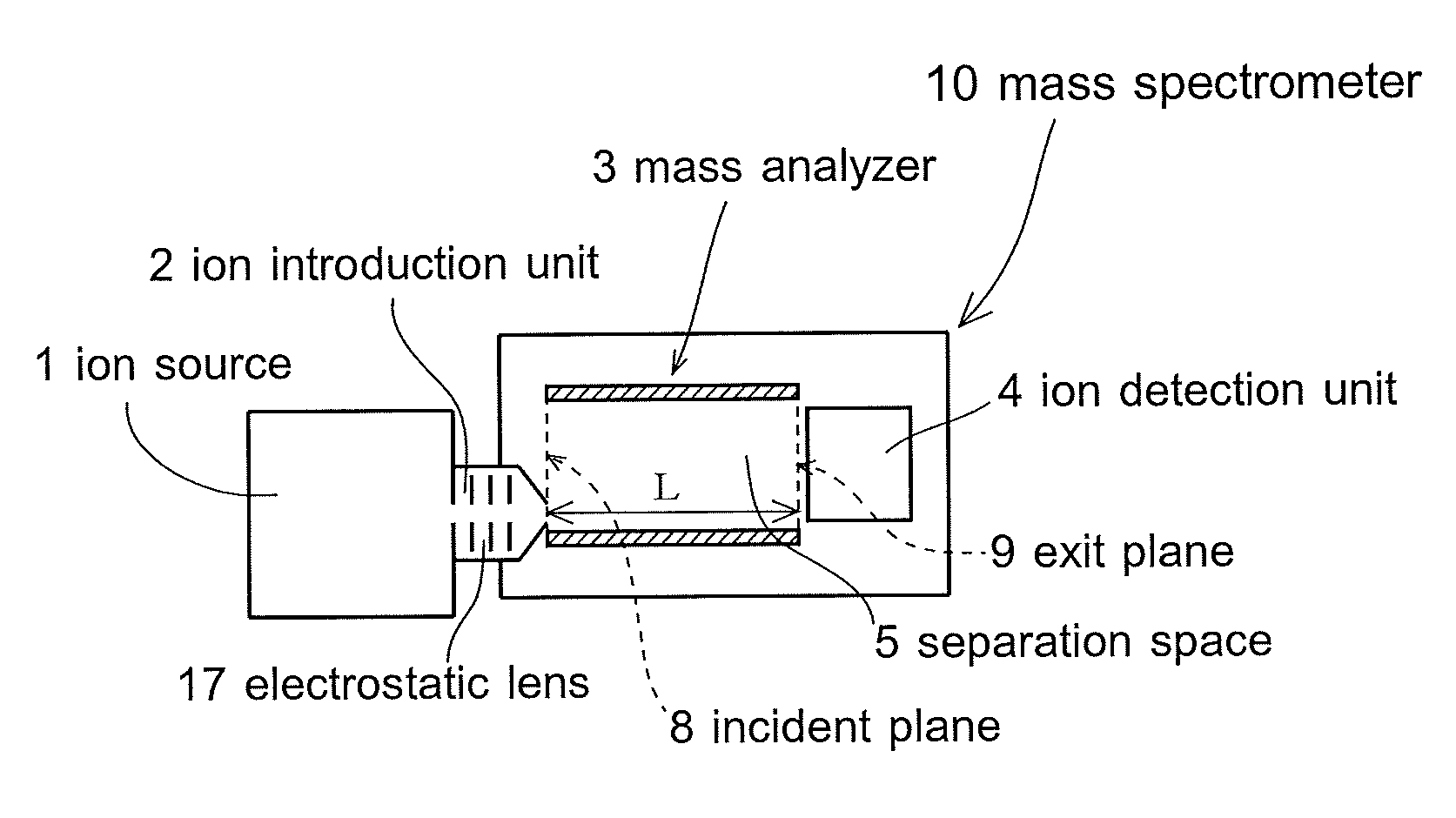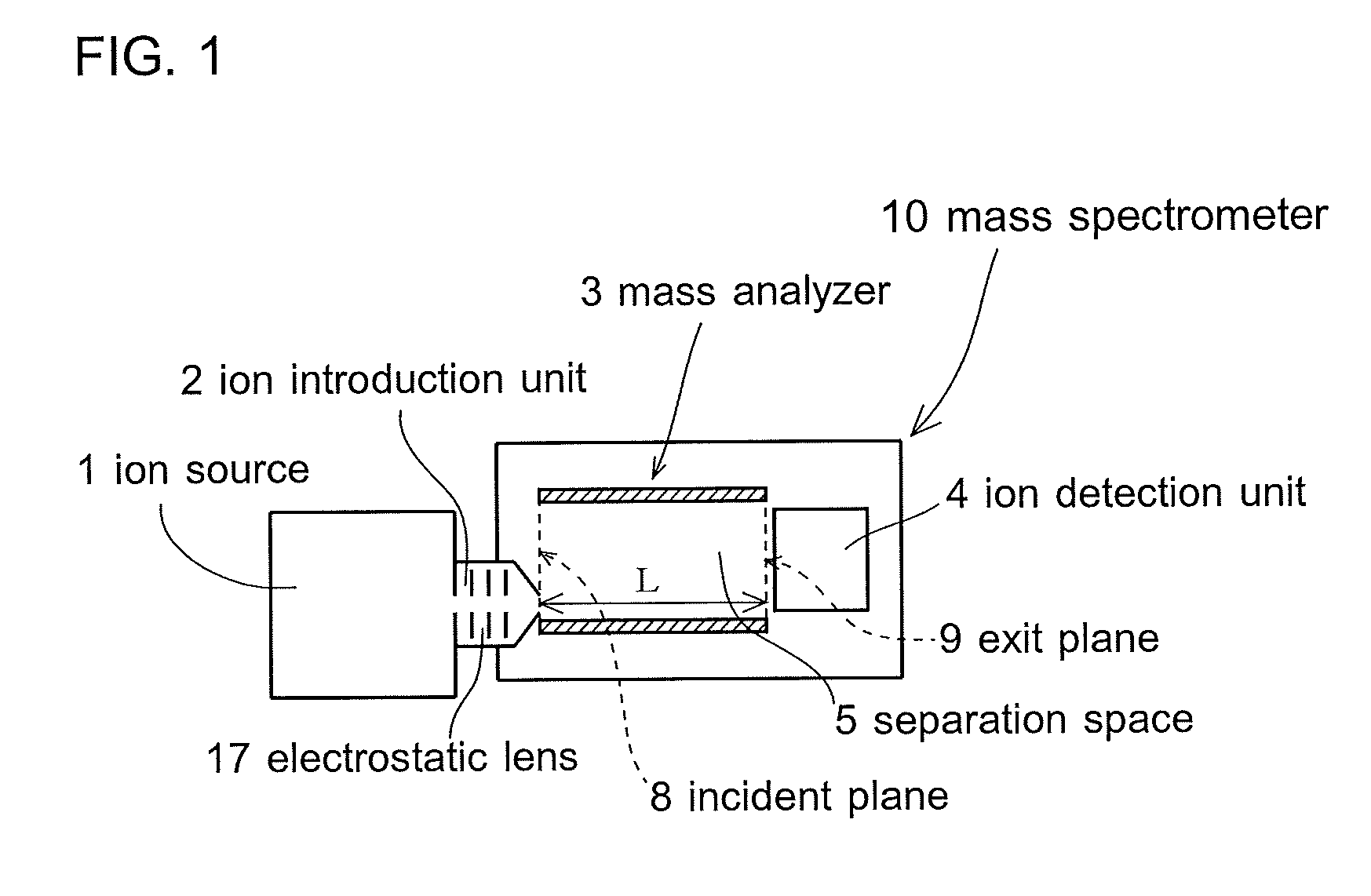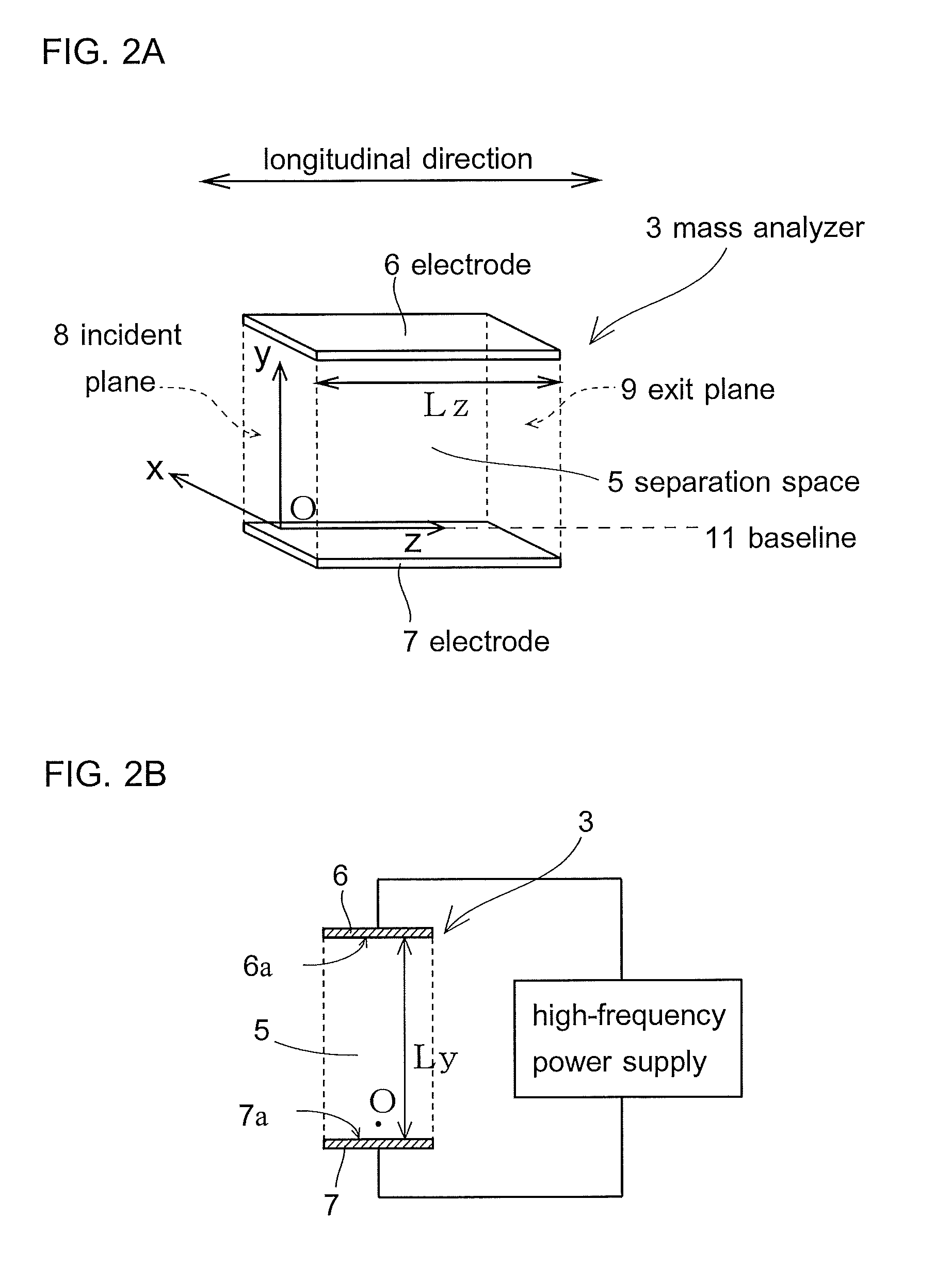Mass analysis device and mass separation device
a mass analysis and separation device technology, applied in the direction of separation process, particle separator tube details, instruments, etc., can solve the problems of ion trapping type devices, however, that require somewhat complicated operation and are not suitable at least for fast real time measuremen
- Summary
- Abstract
- Description
- Claims
- Application Information
AI Technical Summary
Benefits of technology
Problems solved by technology
Method used
Image
Examples
embodiment 1
[0080]In embodiment 1, we describe an example of the mass spectrometer of the present invention which is described in claims 1-3 and 7-10. Here, we describe mainly the usually best case, namely, the case of n=1 that the measured ionic species exits from the separation space having received the action of the one-dimensional high-frequency electric field for one period or for the substantially same time as it. When necessary for description, we use mainly a rectangular wave high-frequency electric field as an example of the one-dimensional high-frequency electric field. We also describe the mass separator of the present invention described in claim 11.
[0081]
[0082]FIG. 1 is a schematic drawing showing the configuration of a mass spectrometer 10. The spectrometer 10 consists of an ion source 1, an ion introduction unit 2, a mass analyzer 3, an ion detection unit 4, etc. A passage of ions is in high vacuum at least in the mass analyzer 3 and around it.
[0083]The ion source 1 has a means t...
example 1
Design Example 1
[0206]Let the required mass resolution m / Δm be 300, and the position resolution ΔY be 0.2 mm. Then about the next value
Y=60.0 mm
is needed from formula (24).
[0207]Next, we consider the case that the measured ionic species of the charge numbers 1 and masses 1-200 u should be scanned by the first scan method, and the strength E of the rectangular wave high-frequency electric field should not become too large. For this, for example, about the next value
T=10 μs
is preferable for the period T of the high-frequency electric field. In this case, from formula (9), the next value
E≈24.9-4970 Vm−1
is needed for E to displace the measured ionic species by the above magnitude Y. (The above range of E corresponds to the mass range 1-200 u of the measured ionic species. The same applies hereafter.) If the distance Ly between the electrodes 6 and 7 is 100 mm, the next value
Vy≈12.49-497 V
is needed for the high-frequency voltage Vy.
[0208]On the other hand, as for the acceleration voltag...
example 2
Design Example 2
[0214]Let the required mass resolution m / Δm be 2500 and the position resolution ΔY be 0.1 mm. Then about the next value
Y=250.0 mm
is needed from formula (24).
[0215]Next, we consider the case that the measured ionic species of the charge numbers 1 and masses 25-1250 u should be scanned by the first scan method, and the strength E of the rectangular wave high-frequency electric field should not become too large. For this, for example, about the next value
T=25 μs
is preferable for the period T of the high-frequency electric field. In this case, from formula (9), the next value
E≈414.6-20700 Vm−1
is needed for E to displace the measured ionic species by the above magnitude Y. If the distance Ly between the electrodes is 300 mm, the next value
Vy≈124.4-6219 V
is needed for the high-frequency voltage Vy.
[0216]On the other hand, as for the acceleration voltage U and the effective length L of the separation space 5, for example, about the next value
U=20-1000 V
is preferable, when ...
PUM
| Property | Measurement | Unit |
|---|---|---|
| length | aaaaa | aaaaa |
| displacement magnitude | aaaaa | aaaaa |
| length | aaaaa | aaaaa |
Abstract
Description
Claims
Application Information
 Login to View More
Login to View More - R&D
- Intellectual Property
- Life Sciences
- Materials
- Tech Scout
- Unparalleled Data Quality
- Higher Quality Content
- 60% Fewer Hallucinations
Browse by: Latest US Patents, China's latest patents, Technical Efficacy Thesaurus, Application Domain, Technology Topic, Popular Technical Reports.
© 2025 PatSnap. All rights reserved.Legal|Privacy policy|Modern Slavery Act Transparency Statement|Sitemap|About US| Contact US: help@patsnap.com



